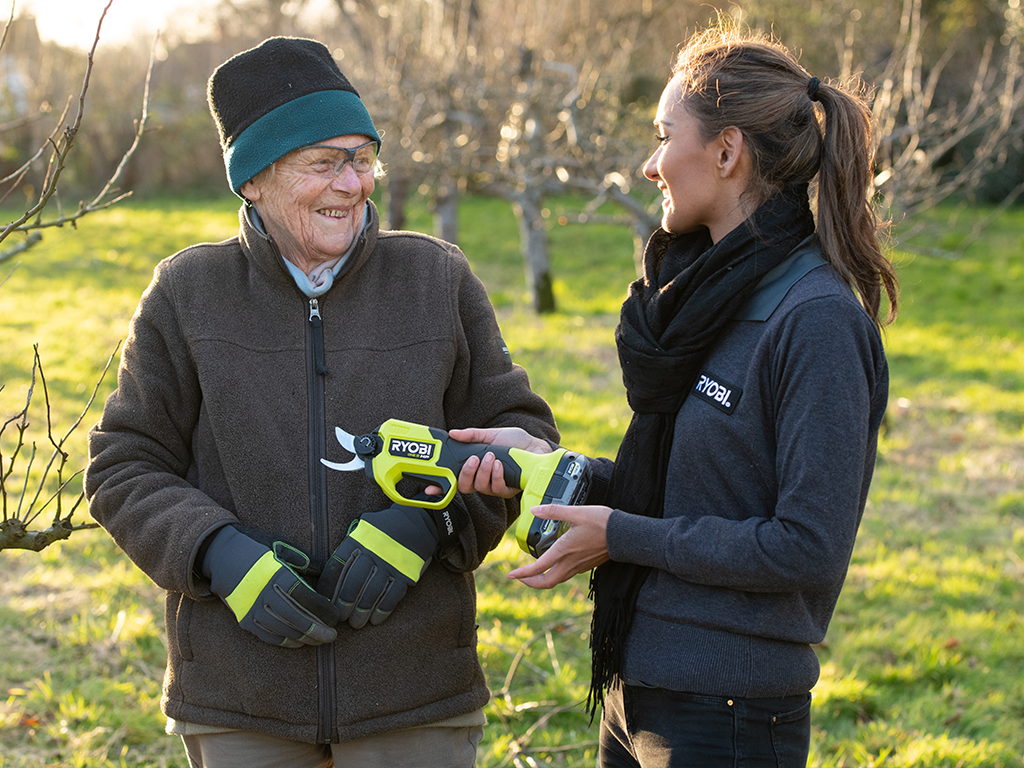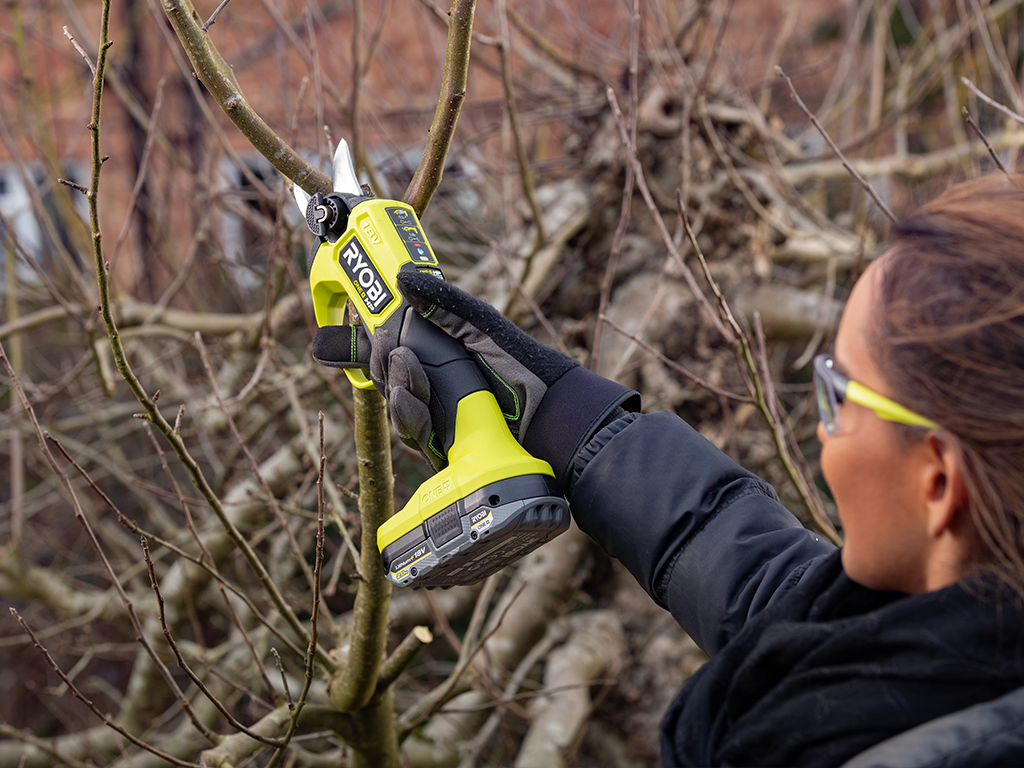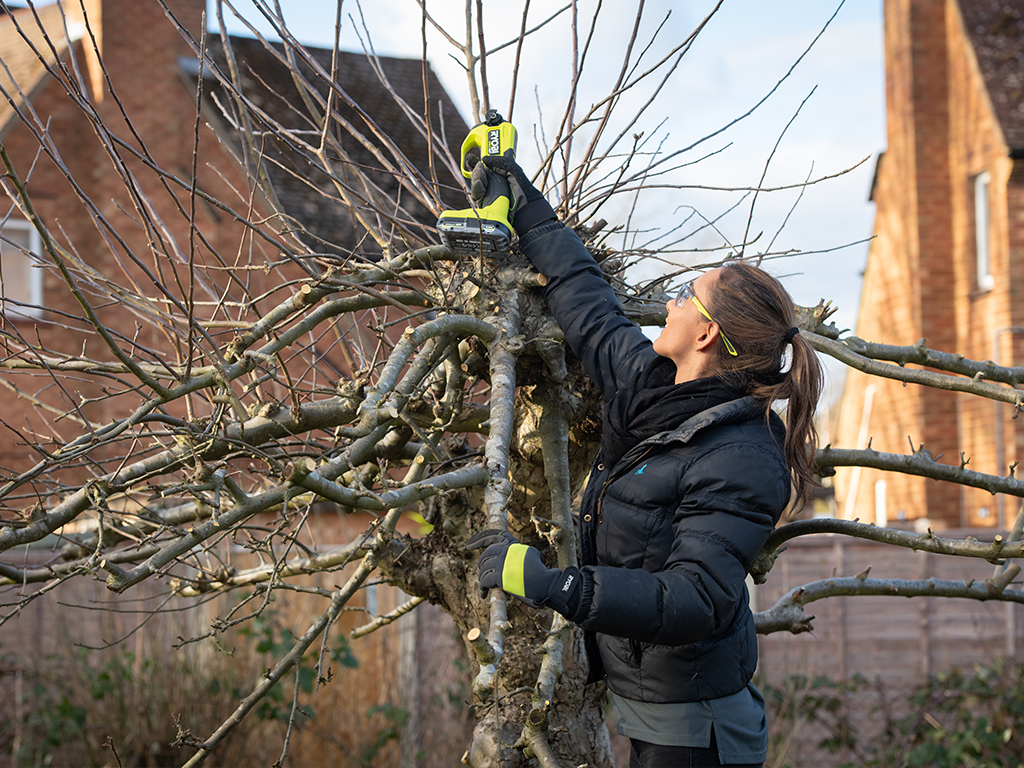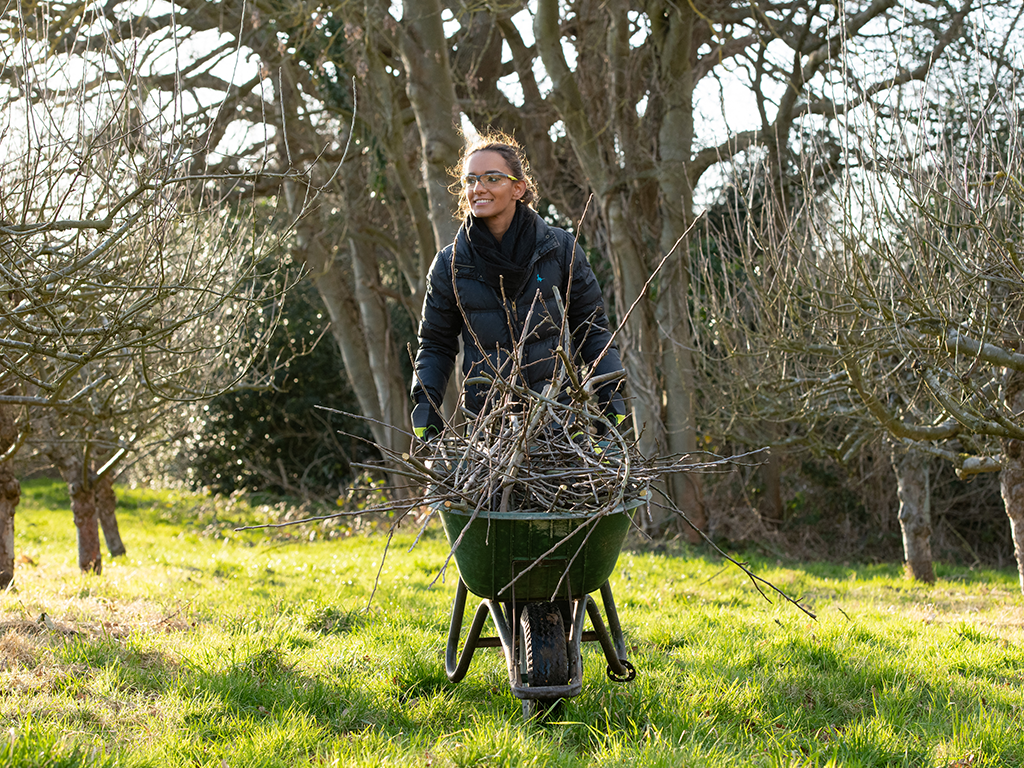Pruning during the Winter is important for the health and growth of your fruit tree yet many don’t prune because they don’t know when they should prune, why they should prune and how to prune correctly. In this blog we will cover these key questions and using the RYOBI® ONE+HP Secateurs [RY18SCXA], show how to make lightwork of any pruning application.
When to prune your fruit tree?
Pruning should be carried out when the tree is dormant, between leaf fall and bud burst. This is usually between November and early March. We recommend pruning at the end of February just before fruit trees start to bloom. This saves you having to prune a couple times in case a harsh Winter damages any branches from the first time you prune.
Why prune your fruit tree?
Pruning a fruit tree like an apple or pear tree is important to ensure a good cycle of fruiting wood. It is best to do this every Winter to maintain the health of a fruit tree. Trees that are not pruned become less productive and congested with old branches. The aim is to create an open goblet shape with a framework of four to five main branches to promote healthy growing.
How to prune your fruit tree?
STEP 1
Stand back and inspect the tree you want to prune. This will help you plan how to tackle this application. It also allows you to check before pruning to ensure there are no bird nests or other animal inhabitants.
STEP 2
Make sure the tool you use has a sharp blade to get clean cuts. A common tool to use are garden secateurs. The RYOBI® ONE+ HP Secateurs is the perfect tool for this application. They make lightwork of cutting through branches up to 28cm and can make up to 1,500 cuts on a single 1.5Ah battery.

STEP 3
When cutting it is important to cut from the correct distance. Prune side shoots back to 5cm of the main branches base.
STEP 4
It is also important to cut at the correct angle. This should be at an angle (45-degrees) to stop moisture collecting at the wound.
STEP 5
When you start pruning, you should focus on removing damaged, dead, and diseased shoots from the tree. These types of branches are not good for the trees health and will struggle to grow fruit on.
STEP 6
Once you have removed these branches you should then prune weak, rubbing, growing inwards branches or ones crossing over each other, removing any competing leaders (V Shaped) cutting off the weaker branch.

STEP 7
The best approach is to pick one side of the tree you are pruning and work your way around. As you prune and remove branches on the tree you will be able to get closer to the trunk, making it easier to prune higher branches. 
STEP 8
Pruning a fruit tree could take you a long time with handheld secateurs because they struggle to cut through thicker branches. Using handheld secateurs for a prolonged time may also cause pain, discomfort and cramp in your hand. Investing in powered secateurs like the RYOBI® ONE+ HP Secateurs would help speed up pruning tasks, because they make fast and clean cuts at the press of a button.
Top tip - Have a garden waste bin or wheelbarrow set up nearby to collect any cuts you make to save you time clearing away once the pruning is done.

Pruning your fruit tree like this every winter will help maintain the health of the tree and produce more fruit for you to enjoy! You can see how quickly and easily the RYOBI® ONE+ HP Secateurs have pruned the tree in the timelapse video and the before and after shot below.
/How-to-Prune-a-Fruit-Tree/Blog-and-PR-Header-Image-1200x500.png)